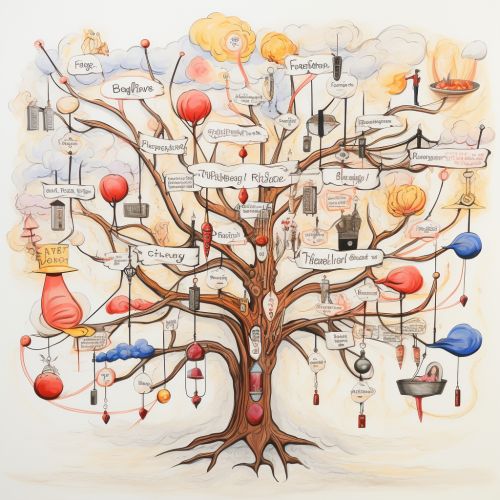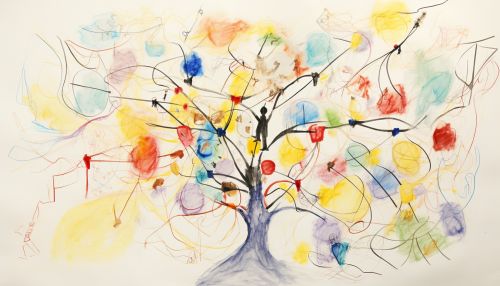Mind Mapping
Introduction
Mind mapping is a graphical technique used for visualizing connections between several ideas or pieces of information. It is a type of diagram that organizes information in a way that is easy to understand and remember. The concept was popularized in the 1970s by British psychologist Tony Buzan. Mind maps are used in many fields including education, business, and personal development.
History
The concept of mind mapping can be traced back to the third century philosopher Porphyry of Tyros, who used graphical methods to represent Aristotelian categories. However, the modern concept of mind mapping was developed by Buzan, a British psychologist, in the 1970s. Buzan's approach was influenced by earlier thinkers such as Leonardo da Vinci, who used diagrammatic techniques to represent knowledge.
Concept
A mind map starts with a central idea or concept, from which related ideas are branched out in a radial manner. These branches can further have sub-branches, creating a hierarchical structure. The central idea is often represented by an image or a keyword, and the branches are usually labeled with words or phrases. The use of colors, images, and spatial arrangement in a mind map stimulates the brain's associative thinking, making it an effective tool for brainstorming, note-taking, organizing information, and problem-solving.
Benefits
Mind mapping has several benefits. It improves learning and understanding by engaging both the left and right hemispheres of the brain. It enhances creativity by encouraging the generation of new ideas through association. It increases productivity by providing a clear overview of complex information, which aids in planning and decision-making. It also improves memory by creating a visual representation of information, which is easier to recall than linear notes.
Applications
Mind mapping has a wide range of applications. In education, it is used for note-taking, essay writing, revising, and presenting information. In business, it is used for project management, strategic planning, team collaboration, and meeting management. In personal development, it is used for goal setting, life planning, and self-analysis. There are also specialized applications of mind mapping in fields such as software development, where it is used for requirements analysis and design; and in healthcare, where it is used for patient education and treatment planning.
Software
There are many software tools available for creating mind maps. These tools offer features such as templates, collaboration, and integration with other software. Some popular mind mapping software include MindManager, XMind, and FreeMind. These tools vary in their functionality, usability, and price, so users should choose a tool that best fits their needs.


